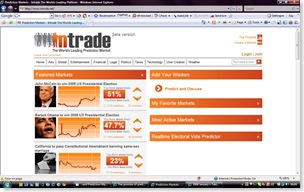According to Management Today, new GSK chief exec Andrew Witty has proposed that "instead of the existing seven large global centres, GSK’s hunt for new drugs should be tackled by many more, much smaller teams – a maximum of 80 scientists per group, in fact".
The rationale is apparently that:
"The new model is based on the assumption that smaller, more dispersed teams will naturally tend to pursue a broader portfolio of products. Each of them may be rather less lucrative than one of the old blockbusters – which are anyway getting much harder to find – but the damage caused by one of them failing will also be a lot less traumatic. Less of a roller-coaster, more of a gentle drive in the country."
That makes sense, although I think there's something about the smaller number too.
When I was an HR Director at Ernst & Young, we started to organise our audit teams into groups ('stables') of 50-80 too, in order to improve collaboration within teams. A group of 80 would include up to 10 managers and we felt that this was about the maximum number of people who could work well together, and through them, bring the full group of about 80 people together into a cohesive team.
Dunbar's analysis may suggest we can network effectively with a slightly higher number of people that this, but I think for real, effective focus and team working, 80's about right.

















